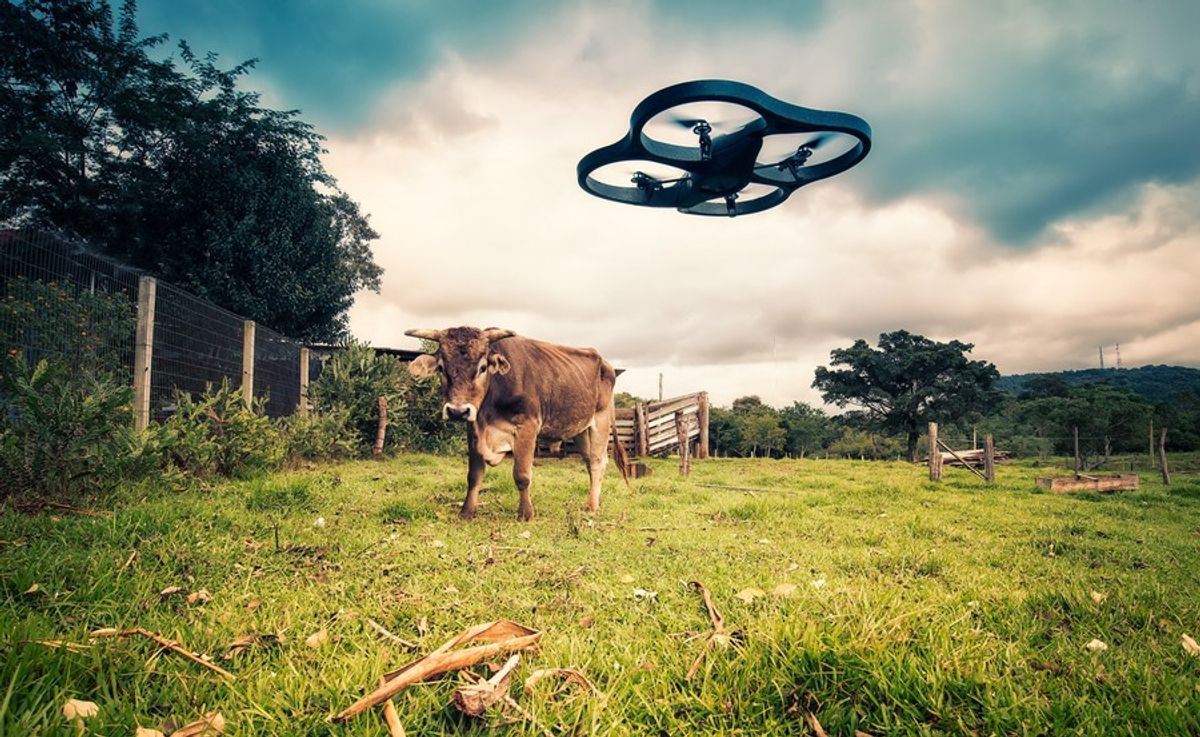The U.S. Federal Aviation Administration is still working to figure out the best way of making sure that people fly their drones safely and legally. It’s very much a work in progress, and has been for years. At this point, anyone who wants to fly a drone weighing more than 250 grams (even just for fun in the backyard) must register that drone and follow some generally commonsense rules and regulations. The FAA, to their credit, has been keeping track of how this has all been going, and late last week they announced a few important updates.
The new change that will affect everyone is that all drones are now required to display registration information externally. The original rule was that you could hide the registration number inside the battery compartment, or anywhere else that could be accessed without tools, but there was some concern from law enforcement about opening up an unknown drone to look for the registration info. For recreational drone users, that’s it, and the other rules remain the same:
- Register your drone
- Fly your drone at or below 400 feet
- Keep your drone within your line of sight
- Be aware of FAA Airspace Restrictions
- Respect privacy
- Never fly near other aircraft, especially near airports
- Never fly over groups of people, public events, or stadiums full of people
- Never fly near emergencies such as fires or hurricane recovery efforts
- Never fly under the influence of drugs or alcohol
- Don’t act like a fool
If you haven’t registered your drone yet, now would be an excellent time to do that. The official site is https://faadronezone.faa.gov/ and it costs US $5; beware of all the sketchy sites who will try to charge you more for the same service.
For Part 107 pilots (you’ve passed the exam), the FAA is also making it easier to fly at night or over people. Flying at night no longer requires a waiver, but you will have to complete updated training, hopefully online. The Part 107 exam will be updated with some extra questions about flying safely at night, and pilots who pass the exam will be able to do so immediately. You’ll also have to make sure that your drone is visible—it’ll need “an anti-collision light illuminated and visible for at least 3 statute miles.”
Flying over people is a little more complicated, but it’s interestingly complicated. Now you won’t need a waiver or exemption to fly over people, provided that your drone has some safety features that make it less dangerous:
The FAA proposes a set of performance-based requirements that would allow a small unmanned aircraft to operate over people if the manufacturer can demonstrate that, if the unmanned aircraft crashed into a person, the resulting injury would be below a certain severity threshold. The manufacturer would have the flexibility to design the unmanned aircraft in any way that would allow it to meet this threshold.
Essentially, the FAA wants drones that fly over people to have systems in place that will mitigate how much damage they’re able to do if they accidentally crash into something. That could mean, for example, limitations of their maximum altitude or maximum speed to reduce kinetic energy. It could mean drones made out of soft materials, or drones that are designed to crumple or break apart on impact. It could mean parachutes, rocket-powered escape systems, wormhole generators, or really anything that can either prevent impacts completely or reduce the energy of them below a specific threshold.
In addition to impact energy, the FAA would also require that “the unmanned aircraft would not have exposed rotating parts that could lacerate human skin.” As with the crash damage thing, the FAA isn’t telling manufacturers how to do this, but it suggests options like shrouds or protective cages, or “blades that do not lacerate upon impact,” which could include lightweight blades or squishy blades.
Lastly, the FAA is considering doing away with requiring a Part 107 retest every two years. Instead, you can renew your Part 107 with “online training,” which will save everyone time, money, and hassle.
It’s nice to see the FAA being so proactive about adapting their drone rules to try to reduce how irritating they are for rule-abiding pilots. The problem, though, is always going to be that drones are cheap and available, and it seems like many people, if not most people, just ignore the rules completely.
[ FAA ]
Evan Ackerman is a senior editor at IEEE Spectrum. Since 2007, he has written over 6,000 articles on robotics and technology. He has a degree in Martian geology and is excellent at playing bagpipes.



